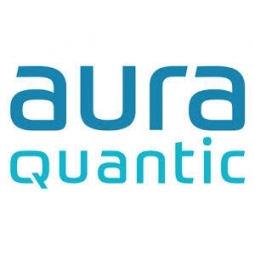技术
- 应用基础设施与中间件 - 中间件、SDK 和库
- 基础设施即服务 (IaaS) - 公共云
适用行业
- 水泥
- 建筑与基础设施
适用功能
- 产品研发
- 质量保证
用例
- 施工管理
- 基础设施检查
服务
- 系统集成
- 测试与认证
关于客户
本案例研究中的客户是哥伦比亚内政部基础设施和发展部。该部门负责执行基础设施政策,以促进整个哥伦比亚领土的公共安全和保护公民生活。它利用基础设施项目的可行性、批准和监督流程、移动性和用于安全和共存的综合应急系统来履行其使命。该部门与来自各市、32 个部门以及国家警察、哥伦比亚海事局和司法部等其他实体的 1103 名市长合作。
挑战
哥伦比亚内政部基础设施和发展部在管理其基础设施项目方面面临着重大挑战。 2010年至2016年期间,该部门批准了1,138个基础设施项目,国家安全与共存基金的捐款总额约为4.1亿美元。可行性流程由 8 个子流程组成,涉及 13 名专业人员和 3 名支持人员的互动,由于活动的手动协调而变得复杂。仅 2015 年,就有 974 个项目经过审查和评估,每个项目平均包含 120 页文档。文件管理的缺乏使得监测和获取信息变得困难,而且证明文件需要亲自提交,需要全国各地的公职人员前往波哥大。该部门还需要为各个政府实体生成报告,但在没有自动化的情况下生成的大量记录无法提供任何流程可追溯性或准确信息。
解决方案
为了应对这些挑战,基础设施部使用 AuraQuantic Helium iBPMS 平台实施了一个基础设施项目信息系统,称为 SIPI 项目。该平台半自动化了可行性子流程,允许外部和内部用户以协调的方式参与流程并共享文档。文件管理和注册变得隐含在这个过程中,消除了监督的需要,并使项目从开始到结束都可以被访问和监控。 SIPI 项目还包括一个强大的安全系统,以保证用户的真实性、基于角色的活动分发、基于 Web 的架构(允许并行执行相同的活动)、通过优化的流程和子流程最小化流程重组、动态子流程的执行,以及统计报告的生成和监控。
运营影响
数量效益

Case Study missing?
Start adding your own!
Register with your work email and create a new case study profile for your business.
相关案例.

Case Study
System 800xA at Indian Cement Plants
Chettinad Cement recognized that further efficiencies could be achieved in its cement manufacturing process. It looked to investing in comprehensive operational and control technologies to manage and derive productivity and energy efficiency gains from the assets on Line 2, their second plant in India.

Case Study
IoT System for Tunnel Construction
The Zenitaka Corporation ('Zenitaka') has two major business areas: its architectural business focuses on structures such as government buildings, office buildings, and commercial facilities, while its civil engineering business is targeted at structures such as tunnels, bridges and dams. Within these areas, there presented two issues that have always persisted in regard to the construction of mountain tunnels. These issues are 'improving safety" and "reducing energy consumption". Mountain tunnels construction requires a massive amount of electricity. This is because there are many kinds of electrical equipment being used day and night, including construction machinery, construction lighting, and ventilating fan. Despite this, the amount of power consumption is generally not tightly managed. In many cases, the exact amount of power consumption is only ascertained when the bill from the power company becomes available. Sometimes, corporations install demand-monitoring equipment to help curb the maximum power demanded. However, even in these cases, the devices only allow the total volume of power consumption to be ascertained, or they may issue warnings to prevent the contracted volume of power from being exceeded. In order to tackle the issue of reducing power consumption, it was first necessary to obtain an accurate breakdown of how much power was being used in each particular area. In other words, we needed to be able to visualize the amount of power being consumed. Safety, was also not being managed very rigorously. Even now, tunnel construction sites often use a 'name label' system for managing entry into the work site. Specifically, red labels with white reverse sides that bear the workers' names on both sides are displayed at the tunnel work site entrance. The workers themselves then flip the name label to the appropriate side when entering or exiting from the work site to indicate whether or not they are working inside the tunnel at any given time. If a worker forgets to flip his or her name label when entering or exiting from the tunnel, management cannot be performed effectively. In order to tackle the challenges mentioned above, Zenitaka decided to build a system that could improve the safety of tunnel construction as well as reduce the amount of power consumed. In other words, this new system would facilitate a clear picture of which workers were working in each location at the mountain tunnel construction site, as well as which processes were being carried out at those respective locations at any given time. The system would maintain the safety of all workers while also carefully controlling the electrical equipment to reduce unnecessary power consumption. Having decided on the concept, our next concern was whether there existed any kind of robust hardware that would not break down at the construction work site, that could move freely in response to changes in the working environment, and that could accurately detect workers and vehicles using radio frequency identification (RFID). Given that this system would involve many components that were new to Zenitaka, we decided to enlist the cooperation of E.I.Sol Co., Ltd. ('E.I.Sol') as our joint development partner, as they had provided us with a highly practical proposal.

Case Study
Splunk Partnership Ties Together Big Data & IoT Services
Splunk was faced with the need to meet emerging customer demands for interfacing IoT projects to its suite of services. The company required an IoT partner that would be able to easily and quickly integrate with its Splunk Enterprise platform, rather than allocating development resources and time to building out an IoT interface and application platform.

Case Study
Bridge monitoring in Hamburg Port
Kattwyk Bridge is used for both rail and road transport, and it has played an important role in the Port of Hamburg since 1973. However, the increasing pressure from traffic requires a monitoring solution. The goal of the project is to assess in real-time the bridge's status and dynamic responses to traffic and lift processes.

Case Study
Bellas Landscaping
Leading landscaping firm serving central Illinois streamlines operations with Samsara’s real-time fleet tracking solution: • 30+ vehicle fleet includes International Terrastar dump trucks and flatbeds, medium- and light-duty pickups from Ford and Chevrolet. Winter fleet includes of snow plows and salters.








